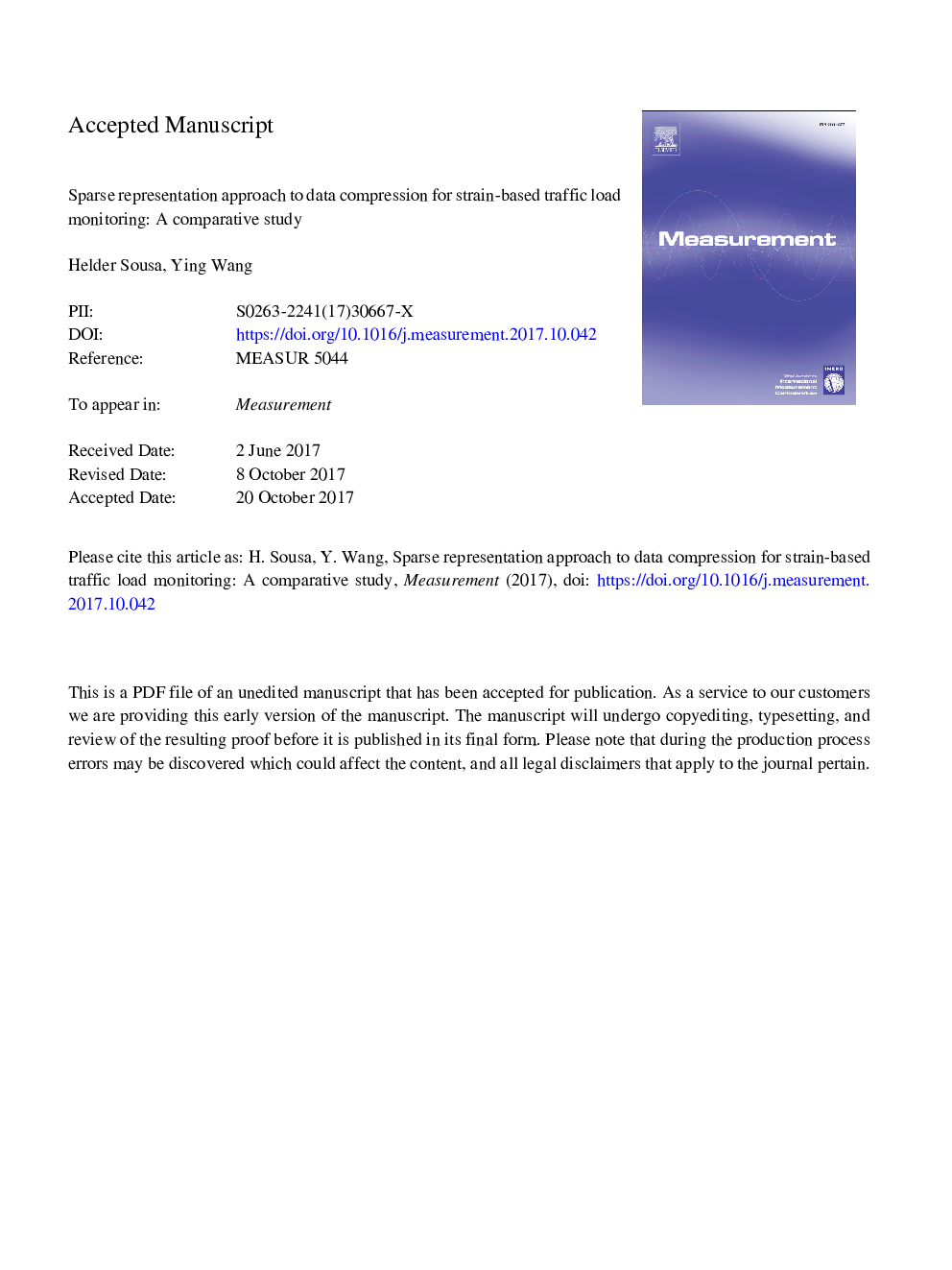| کد مقاله | کد نشریه | سال انتشار | مقاله انگلیسی | نسخه تمام متن |
|---|---|---|---|---|
| 7121917 | 1461465 | 2018 | 24 صفحه PDF | دانلود رایگان |
عنوان انگلیسی مقاله ISI
Sparse representation approach to data compression for strain-based traffic load monitoring: A comparative study
ترجمه فارسی عنوان
رویکرد نمایندگی انحصاری برای فشرده سازی داده ها برای نظارت بر بارگیری ترافیک مبتنی بر کرنش: یک مطالعه مقایسه ای
دانلود مقاله + سفارش ترجمه
دانلود مقاله ISI انگلیسی
رایگان برای ایرانیان
کلمات کلیدی
موضوعات مرتبط
مهندسی و علوم پایه
سایر رشته های مهندسی
کنترل و سیستم های مهندسی
چکیده انگلیسی
Among different Structural Health Monitoring (SHM) systems applied on bridges, Bridge Weight-in-Motion (BWIM) is probably the one with widest applications worldwide. Briefly, BWIM uses on-structure sensors that are able to acquire signals sensitive to traffic load events, which can be used as an indirect indicator of the load magnitude. The sampling rate required for this is relatively high (at least 10â¯Hz), which usually lead to databases with sizes that might reach the order of gigabytes. It is impractical to process this volume of information in the context of infrastructure asset management. Hence, an effective and efficient method for the compression and storage of BWIM data is becoming mandatory. In this paper, sparse representation algorithms have been innovatively applied to the BWIM data compression. A comparative study is performed based on measurements collected from a real bridge, by exploring different methods including Discrete Fourier Transform (DFT), Discrete Cosine Transform (DCT), Discrete Wavelet Transform (DWT), and two dictionary learning methods, i.e. Compressive Sensing (CS) and K-means Singular Value Decomposition (K-SVD). It has been found that the K-SVD method shows the best performance when applied to this specific type of data, while the DWT method using Haar wavelet is the most computationally efficient. Nearly lossless reconstruction of the signal is achieved by using K-SVD with less than 0.1% reserved coefficients, which gives evidence that dictionary learning technologies are feasible to guarantee the same level of information even with much smaller databases. Therefore, the utilization of dictionary learning is a clear step forward towards higher levels of efficiency in the compression and storage of data collected by SHM systems.
ناشر
Database: Elsevier - ScienceDirect (ساینس دایرکت)
Journal: Measurement - Volume 122, July 2018, Pages 630-637
Journal: Measurement - Volume 122, July 2018, Pages 630-637
نویسندگان
Helder Sousa, Ying Wang,
